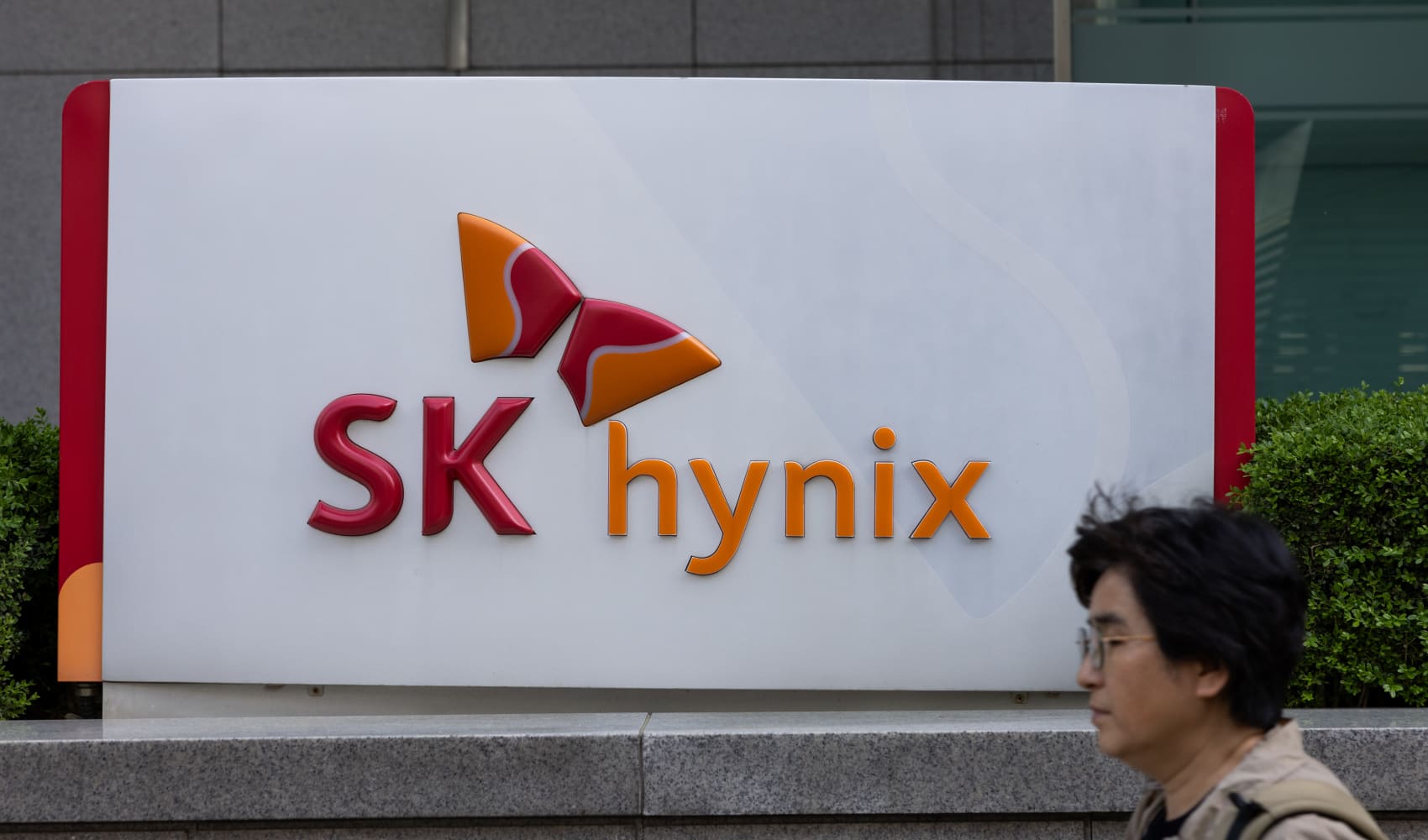
(This article was sent first to members of the CNBC Investing Club with Jim Cramer. To get the real-time updates in your inbox, subscribe here.)
The S&P 500 pulled back slightly this week, though it remains a stone's throw from record highs as we saw some intra-week volatility on the back of hotter than expected inflationary data.
With earnings season winding down (though we still have a few Investing Club names and other market bellwethers reporting next week — more below), conferences are starting to pick up. They will provide some more real-time insight into the operating environment and help investors frame their thoughts about the ongoing supply chain and labor market headwinds.
Under the hood this week, the S&P 500 was led by the materials sector followed by healthcare. Consumer discretionary and energy and utilities lagged for the week.
Get Philly local news, weather forecasts, sports and entertainment stories to your inbox. Sign up for NBC Philadelphia newsletters.
On inflation, how scared should we be?
Thinking through the current market dynamics, "rampant inflation" will no doubt remain a talking point of the "inflationistas" and as a result, we think it important to provide some thoughts on the matter, in addition to those Jim shared on Mad Money this past Thursday, when he commented that "you need to remember that [Wednesday's CPI reading] a backward-looking indicator; there's a very real chance this will be as bad as it gets, which would mean an inflation driven sell-off [like the one we saw on Wednesday] is indeed a buying opportunity."
For starters, let's keep in mind that the number that was thrown around all week — that 6.2% CPI reading — is not the appropriate proxy as it includes highly volatile food and energy prices, take those out and the core CPI was 4.6%. That's still a hot print, but not quite as hot as what the inflation hawks are throwing around. Furthermore, keep in mind that the Fed's preferred measure of inflation is the core PCE price index, which registered a 3.6% rate in September for the fourth month in a row. We'll see what October has in store when the results are released next month.
Money Report
Even if October comes in a bit hot, we think it's also important to remember that the Fed has been trying to generate some inflation for nearly a decade and, despite their best efforts, they have struggled and largely failed to hit their 2.0% target until this year.
Given that, let's consider what this past year's rise in inflation has done to prices from a longer-term perspective. Since 2012, seasonally adjusted personal consumption prices excluding food and energy have increased 18.3%, according to Federal Reserve Economic Data. Now consider, had the Federal Reserve succeeded in reaching their target of 2% consistently over time — so let's say 2% for 10 years (2012 through the end of 2021)— then prices today compared to the level in 2012 should arguably be up nearly 22%.
Bottom line: While the recent price increases have been rapid in recent months, prices still have not reached the levels we have arguably been targeting over the past decade.
Of course, that doesn't tell us what lies in store —and that is what the bears fear, that inflation is going to get away from us and run at an accelerated pace for a long time.
However, we believe it is important to acknowledge some forces that could change the inflation trajectory for the better:
- The supply chain bottlenecks could be temporary.
- Labor supply could come back into the market as stimulus money sitting in savings accounts is spent.
- The rise in oil prices — which contribute to that non-core headline reading everyone seems to want to cite — has stalled.
- And perhaps most importantly, once we are past these temporary dynamics, the longer-term secular deflationary force that is technology (think specifically digitization and automation), will remain in place and likely act as an even greater force than before the pandemic due to the acceleration we saw in 2020 and 2021.
So, when the bears come out and tell you about rampant inflation, we think it worthwhile to sit back, zoom out, take a longer-term view and seek out those high quality long-term secular investments that the market wants to indiscriminately sell despite the simple fact that many of those names have proven themselves invaluable backbones of global productivity over the past 18 months.
What we learned this week:
A quick look at some of the broader market measures that we like to keep an eye: We see the dollar index has strengthened to the 95 level, gold has advanced to the mid-$1,800s region, WTI crude prices are holding at around the $80 per barrel region and the 10-year Treasury yield has advanced to the mid-1.5% level.
Within the portfolio we heard from PayPal, Wynn Resorts and Disney. (Click the company names for links to this week's club updates.)
In addition to earnings, while it wasn't a huge week on the macroeconomic we did get a couple key inflation-related reports. On Tuesday, the producer price index (PPI), advanced 0.6% in October on seasonally adjusted basis, matching expectations. The PPI measures prices to producers for a basket of goods and provides hints into inflationary dynamics because when producer costs run too hot, they are forced to either eat the cost at the expense of profit margins, or pass those costs along to the consumer. Per the release, over 60% of the monthly advance can be attributed to a 1.2% increase in prices for final demand goods, though that was aided by a 0.2% increase in prices for final demand services and a 6.6% increase in final demand construction. With the October advance, PPI was up 6.6% YoY, below expectations for an 8.6% annual advance.
Importantly, excluding food, energy and trade services (which "measure changes in margins received by wholesalers and retailers"), core PPI increased 0.4% in October, above expectations for a 0.3% monthly advance. As a result, the core PPI was up 6.2% on an annual basis, in line with expectations, though an acceleration from the 5.9% rate seen in the 12-month period ending in September.
On Wednesday, we got the CPI data which we discussed above.
Also Wednesday, the U.S. Department of Labor reported that in the week ending Nov. 6, initial jobless claims were 267,000, representing a weekly decline of 4,000 and below the estimate for 260,000. Moreover, this was the lowest level of initial claims since March 14, 2020, the early days of Covid, when it was 256,000. The prior week's reading was revised higher to 271,000, up from 269,000 previously reported. Importantly, the four-week moving average, used to smooth out weekly volatility, came in at 278,000, representing a decline of 7,250 from the previous week's revised average of 285,250 (revised up from 284,750 previously reported). Similar to the weekly number, this represents the lowest level for the moving average since March 14, 2020 when it was 225,500.
What we are watching ahead:
Looking ahead, earnings season continues next week with several of our portfolio companies set to report including Walmart (Tuesday, before the opening bell), Cisco (Wednesday, after the closing bell) and Nvidia (Wednesday, after the closing bell).
Here are the earnings in the week ahead we'll be monitoring:
Mon 11/15
- Open: Tyson Foods (TSN), HeadHunter Group (HHR), Aecom Tech (ACM), Warner Music (WMG), Oatly (OTLY)
- Close: Advance Auto (AAP), Rackspace Tech (RXT), J&J Snack Foods (JJSF), Compass Minerals (CMP), Axon (AXON), Casper (CSPR), Lucid Motors (LCID)
Tues 11/16
- Open: Walmart (WMT), Home Depot (HD), NetEase (MTES), Aramark (ARMK), Sea Ltd (SE), DouTu (DOYU)
- Close: StoneCo (STNE), La-Z-Boy (LZB), Dolby Labs (DLB)
Wed 11/17
- Open: Baidu (BIDU), Target )TGT), Lowe's (LOW), TJX (TJX), iQIYI (IQ), Bilibili (BILI)
- Close: Cisco (CSCO), NVIDIA (NVDA), ZTO Express (ZTO), Bat 7 Body Works (BBWI), Victoria's Secret (VSCO), Sonos (SONO)
Thurs 11/18
- Open: Alibaba (BABA), JD.com (JD), Vipshop (VIPS), Macy's (M), Kohl's (KSS), BJ's Wholesale (BJ), Petco (WOOF), AZEK (AZEK)
- Close: Applied Materials (AMAT), Ross Stores (ROST), Intuit (INTU), Post (POST), Workday (WDAY), Palo Alto (PANW), Farfetch (FTCH)
Fri 11/19
- Open: Foot Locker (FL)
On the macroeconomic front, in addition to keeping an eye on the geopolitical sphere, we will be watching out for the following releases (all times ET):
Monday
- 8:30 Empire State Index
Tuesday
- 8:30 Export, Import Prices
- 8:30 Retail Sales
- 9:15 Capacity Utilization
- 9:15 Industrial Production
- 10:00 Business Inventories
- 10:00 NAHB Housing Market Index
Wednesday
- 8:30 Building Permits
- 8:30 Housing Starts
Thursday
- 8:30 Initial Jobless Claims
- 8:30 Philadelphia Fed Index
- 10:00 Leading Indicators
- 11:00 Kansas City Fed Manufacturing Index
Friday
- (none)
The CNBC Investing Club is now the official home to my Charitable Trust. It's the place where you can see every move we make for the portfolio and get my market insight before anyone else. The Charitable Trust and my writings are no longer affiliated with Action Alerts Plus in any way.
As a subscriber to the CNBC Investing Club with Jim Cramer, you will receive a trade alert before Jim makes a trade. Typically, Jim waits 45 minutes after sending a trade alert before buying or selling a stock in his charitable trust's portfolio. If the trade alert is sent pre-market, Jim waits 5 minutes after the market opens before executing the trade. If the trade alert is issued with less than 45 minutes in the trading day, Jim executes the trade 5 minutes before the market closes. If Jim has talked about a stock on CNBC TV, he waits 72 hours after issuing the trade alert before executing the trade. See here for the investing disclaimer.
(Jim Cramer's Charitable Trust is long PYPL, WYNN, DIS, WMT, CSCO, NVDA.)
Correction: A previous version misstated the ticker for Ross Stores.






